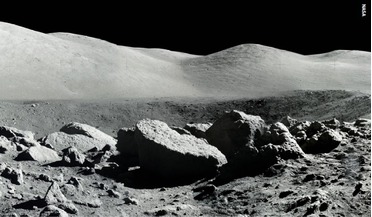 July 2014
Defending NATO and its allies from high-altitude threats
July 2014
Defending NATO and its allies from high-altitude threats
...international pressure, multiple rounds of sanctions, and years of diplomatic negotiations. That is also why it is likely that the United States and its allies will face increasingly sophisticated ballistic missiles in the near future. This will only...
 29 December 2021
China complains to UN after space station endures 'close encounters' with Starlink satellites
29 December 2021
China complains to UN after space station endures 'close encounters' with Starlink satellites
... of about 41.5 degrees. During this period, Starlink satellites launched by Space Exploration Technologies Corporation (SpaceX) of the United States of America have had two close encounters with the China Space Station. For safety reasons, the ...
 September 2016
Moon or Mars - how logical is NASA’s next step?
September 2016
Moon or Mars - how logical is NASA’s next step?
... any resource they are able to remove from an asteroid. In seeking to facilitate a pro-growth environment in space, the United States’ government is walking a fine line in avoiding Article II of the Outer Space Treaty of 1967 (OST), which banned the...
 September 2017
Call for Australia to head back into space
September 2017
Call for Australia to head back into space
...responsive space The solution is linked to a concept known as ‘Operationally Responsive Space’ (ORS). The new Secretary of the United States Air Force (USAF) favours the reinvigoration of the ORS Office [10]. Australia has a lot to offer. In the past...
 April 2021
Space wars - how they start and how to end them
April 2021
Space wars - how they start and how to end them
... orbit to perform a surprise attack on critical space assets in lower orbits. This is such a threat issue that the United States Space Force (USSF) is now considering ‘Moon Patrols’. Example statistics of ‘lost’ space objects by orbital altitude and...
 October 2021
Mining lunar hydrogen
October 2021
Mining lunar hydrogen
..., Canada, Japan, Luxembourg, Italy, UAE, UK, Ukraine, South Korea and New Zealand - evidence the commitment of the United States. The Accords provide for the creation of so-called ‘lunar safe havens’ around future bases to “prevent damage...